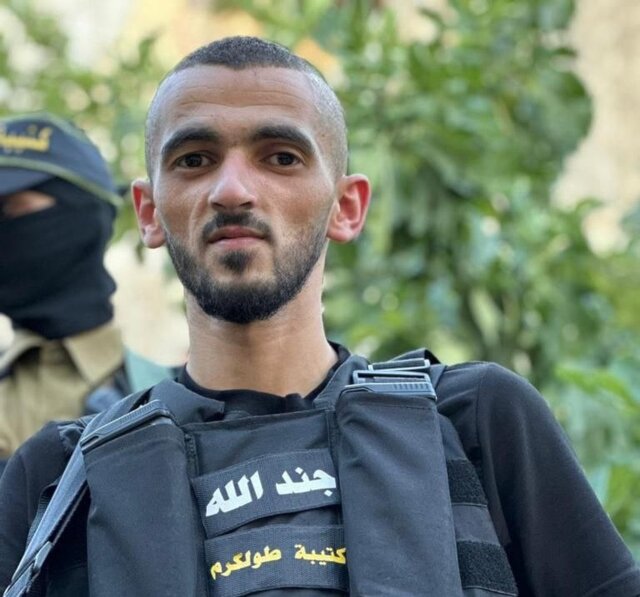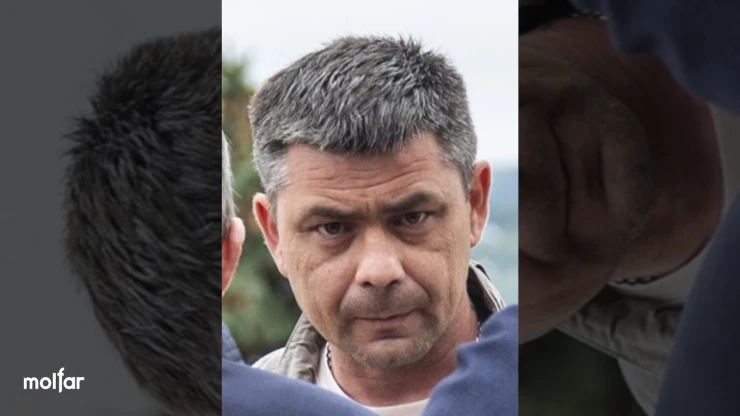Akram al-Kaabi: Iranian-Backed Militia Leader Threatens American Presence in Iraq
Akram al-Kaabi: Iranian-Backed Militia Leader Threatens American Presence in Iraq
On October 28, Akram al-Kaabi, a Shia cleric and secretary-general of Harakat Hezbollah al-Nujaba (HHN), threatened to launch “lethal attacks” against the United States, unless the country completely withdraws from Iraq. At a press conference in Tehran, Al-Kaabi stated: “Not only the various groups of the resistance in Iraq but also all Iraqi people from all walks of life are calling for the withdrawal of American troops. Eventually, the Americans will have to leave Iraq and go home forever” (Shafaq, October 28; Tehran Times, October 28). The militia leader’s comments are the latest in a long career challenging American influence in Iraq.
On September 9, the head of U.S. Central Command General Frank McKenzie announced a drawdown of troops in Iraq from 5,200 to 3,000. U.S. forces have been withdrawing from the country throughout the past year, handing over eight bases to Iraqi security forces. The American military presence in Iraq has since been consolidated to locations in Baghdad, Irbil and in the western section of the country in Ain al-Asad (Al Jazeera, September 9; Anadolu Agency, August 1).
Al-Kaabi first joined the insurgency following the U.S. invasion of Iraq in 2003. He quickly joined Muqtada al-Sadr’s Jaysh al-Mahdi (JAM), becoming a commander in the organization. He was designated as a specially designated global terrorist by the U.S. State Department in 2008 for planning and conducting multiple attacks against the Iraqi government and coalition forces (U.S. State Department, March 5, 2019). Kaabi was one of the founders of Asa’ib Ahl al-Haq (AAH), which was an offshoot of JAM trained by Hezbollah operatives with support and funding from Iran. AAH broke off from JAM when al-Sadr accepted a ceasefire with coalition forces in 2004.
Al-Kaabi claims that following the U.S. withdrawal from Iraq in 2011, he handed all of his responsibilities over to AAH founder and leader Qais al-Khazali in order to complete his Shia religious studies (see Militant Leadership Monitor, February 4). He has stated that he formed HHN in response to Islamic State (IS) seizing large amount of territory in Syria and Iraq in 2013. Al-Kaabi has denied that he split from AAH, but has said that they have not united due to disagreements over style and policy (al-Monitor, March 16, 2015).
HHN was one of the first Iraqi militia groups to send fighters to Syria to assist the regime of Bashar al-Assad, sending fighters beginning soon after the uprising began in 2012 and 2013, and provided important contributions to several battles and campaigns. The militia took part in the regime’s 2015 campaign to seize southern Aleppo and assisted in breaking the sieges of Nubl and Zahraa (al-Masdr News, December 16, 2015). During their operations in Aleppo, HHN was accused of involvement in the killing of 82 civilians (TRT World, December 15, 2016). The militia also took part in fighting in eastern Damascus and in Hama, and against IS in southeastern Syria.
In March 2019, the U.S. Treasury Department sanctioned al-Kaabi, HHN, and its media affiliate, Nujaba TV, citing the group’s closeness to the Iranian Revolutionary Guard Corp (IRGC)-Quds Force then leader Qasem Soleimani and Hezbollah Secretary-General Hassan Nasrallah (The National, March 6, 2019; U.S. State Department, March 5, 2019).
Following the U.S. airstrike that killed Qasem Soleimani and Popular Mobilization Units (PMU) Deputy Chairman Abu Mahdi and Kata’ib Hezbollah commaner al-Muhandis on January 3, 2020, al-Kaabi joined other PMU leaders in calling for revenge. HHN is part of the PMU umbrella of Shia militias—sponsored and supported by the Iraqi government—and operated under the organization in the campaign against Islamic State in Iraq. He attended al-Muhandis’ funeral, and soon after organized a meeting with Moqtada al-Sadr and several PMU militia leaders at his office to discuss a response to the U.S. airstrike and how to present a united front. HHN reportedly acted as a facilitator within the PMU following al-Muhandis’ death, though Kata’ib Hezbollah still occupied a central role within the organization. Al-Kaabi gained prominence during this period as a result of being photographed with Esmail Ghaani, Soleimani’s successor as head of the IRGC-Quds Force (al-Monitor, January 28).
On October 10, the new Iraqi Resistance Committee, consisting of the Iranian-supported militias in Iraq, announced a ceasefire agreement with U.S. forces, contingent on Iraqi authorities presenting a timetable for their withdrawal (see Terrorism Monitor, October 23). Though the ceasefire statement did not include the names of the militias that signed onto the agreement, al-Kaabi, who traveled to Tehran several days before the announcement to consult with Iranian military officials, held a press conference on October 28 to explain the Iraqi Resistance Committee’s decision. He explained that the committee agreed to the ceasefire with three conditions. First, they demanded a clear timetable for the withdrawal of U.S. forces from Iraq; second, that the United States cease operating in Iraqi airspace; and third, that the United States cease interfering in Iraq’s internal affairs. Al-Kaabi claimed that the Iraqi Resistance Committee agreed to the ceasefire because unnamed Iraqi politicians said that the U.S. needed a face-saving withdrawal from the country and time to implement it (Tehran Times, October 28).
Al-Kaabi’s recent comments in Tehran will likely hasten the divisions emerging within the PMU. Broadly speaking, the Iraqi Shia militias are divided between those who support Tehran and their governing ideology, wilayet al-fiqh (Guardianship of the Islamic Jurist), and those who follow the Najaf clergy, led by Ali al-Sistani, who is the highest Shia religious authority in Iraq. Militia leaders and influential politicians making up the latter camp have criticized the pro-Iranian militias’ attacks on the U.S. embassy in Iraq, implicitly supporting Iraqi Prime Minister Mustafa al-Kadhimi’s efforts to curtail the influence of the former. AAH leader Qais al-Khazali, historically close to al-Kaabi, said the attacks on the U.S. embassy were legitimate, saying it is, “a military base of an occupying force” (Arab News, October 26; al-Monitor, September 28; see Terrorism Monitor, October 23). AAH is believed by locals to be responsible for the recent kidnapping of 12 Sunni men in Salahuddin province on October 19. Eight of the 12 men have since been discovered dead (Al-Monitor, October 19; Alaraby.co.uk, October 23). On October 17, marchers holding PMU flags burned down the Baghdad headquarters of the Kurdish Democratic Party after the Iraqi Foreign Minister, who is a Kurd, said the capital and Green Zone must be “cleansed” of the militias and PMU (Kurdistan24, October 17). These recent developments have spurred fears of a return to the sectarian violence that has plagued Iraq in the past.
Should such violence return, al-Kaabi will be at the forefront, protecting and promoting Iranian interests. Al-Kaabi has openly admitted that Iran funds, trains, and arms HHN, and has gone so far as to say that he would overthrow the government in Baghdad if ordered to by the Iranian Supreme Leader Ayatollah Ali Khamenei (al-Monitor, March 16, 2015). He commands an estimated 10,000 fighters in Iraq, who are veterans of the campaigns against opposition groups and Islamic State in Syria and Iraq. The current ceasefire, which is keeping the Iranian-supported militias from targeting U.S. facilities and forces in the country, is unlikely to hold, as Prime Minister Kadhimi and other factions still see the American presence as being required to maintain stability and are unlikely to present a timetable for U.S. withdrawal as requested. If and when the Iranian-backed militias, including HHN, start attacking U.S. facilities again, one should expect to see al-Kaabi justifying the attacks and supporting Iranian influence in Iraq.


